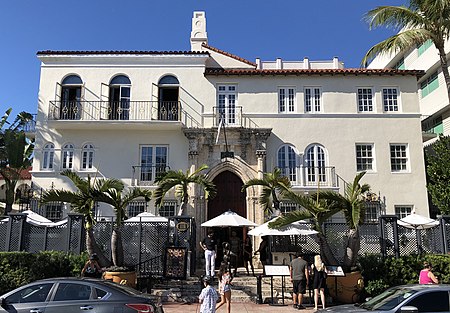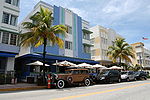Casa Casuarina
1930 establishments in FloridaGardens by Roy StrongHotels in Miami Beach, FloridaHouses completed in 1930Houses in Miami ... and 3 more
Mediterranean Revival architectureMiami Beach Architectural DistrictVersace

Casa Casuarina, also known as the Versace Mansion, is an American property built in 1930, renowned for being owned by and the place of the murder of the Italian fashion designer Gianni Versace; he lived there from 1992 until his death in 1997. It is located at 1116 Ocean Drive in the South Beach neighborhood of Miami Beach, Florida, in the Miami Beach Architectural District. Since 2015, it has been adapted into and operates as a luxury boutique hotel known as The Villa Casa Casuarina.
Excerpt from the Wikipedia article Casa Casuarina (License: CC BY-SA 3.0, Authors, Images).Casa Casuarina
Ocean Drive, Miami Beach
Geographical coordinates (GPS) Address Phone number Website External links Nearby Places Show on map
Geographical coordinates (GPS)
| Latitude | Longitude |
|---|---|
| N 25.782 ° | E -80.130611111111 ° |
Address
The Villa Casa Casuarina
Ocean Drive 1116
33139 Miami Beach
Florida, United States
Open on Google Maps









